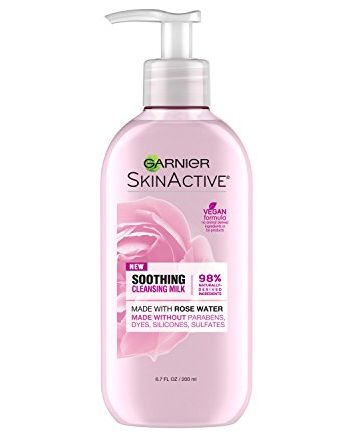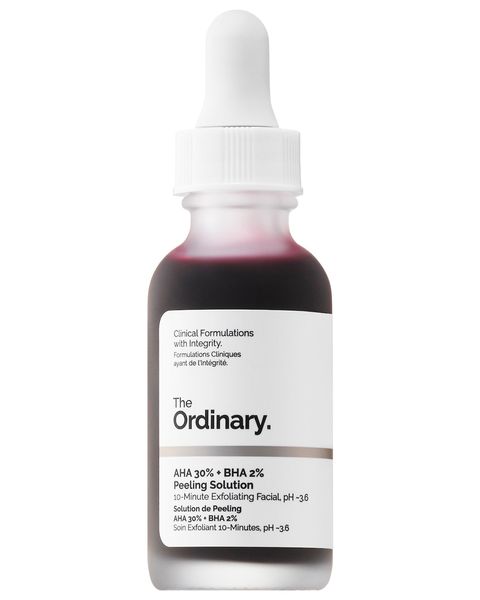How to Get Rid of Milia on Cheeks
If you're prone to breakouts, you might consider yourself quite a pimple pro. You probably know how to identify whiteheads (pimples with a visible white tips), blackheads (dark spots caused by oxidized gunk in your pores), even cycts (inflamed red zits that never come to a head) in your sleep. You may even feel like you have a handle on dealing with them and own an entire arsenal of tools and products to help.
But what about those tiny bumps that pop up in clusters around your eyes, nose, or cheeks? I've got some news for you: Those "milk spots" are none of the above. They are most likely milia, which is a class of pimple all on its own.
"Milia can be mistaken for whiteheads, as they can be yellow or white," says Marnie Nussbaum, MD, clinical instructor of dermatology at Weill Cornell Medical College. Even though they share a color with whiteheads, that's where the similarities end. Treating milia is pretty different than treating pimples (more on this below).
Before you panic, they're not completely impossible to prevent and deal with at home. Chances are, you probably own a lot of the products that dermatologists and estheticians recommend to improve milia already. But unlike with regular zits, if they don't go away on their own, you might need to enlist the help of a skincare pro. Here's exactly how to get rid of milia.
First, what exactly are milia?
"Milia are tiny keratin-filled cysts on the surface of the skin," says Dr. Nussbaum. "They are often confused with whiteheads or acne breakouts. However, these bumps are filled with hard balls of keratin, as opposed to liquid sebum and bacteria. And they cannot be extruded easily."
Those hard balls of keratin are due to a buildup of dead skin cells and sebum, aka your skin's natural oils. Because of their round shape and white color (milia appear as white on all skin tones, FYI), they are sometimes described as tiny pearls, says Renée Rouleau, celebrity esthetician.
You'll be able to identify milia bumps from their placement—they are most often found around the eyes, nose, and on cheeks. "They are not associated with surrounding redness or inflammation like acne," says Dr. Nussbaum.
Since you can't pop your milia, maybe you'll get some satisfaction from watching Dr. Pimple Popper work her extraction magic:
What causes milia?
Not cleansing your skin well could be a reason you see milia starting to crop up. "It is essential to properly cleanse the skin twice daily to remove dead skin cells, extra sebum, and product," says Dr. Nussbaum. So make sure you're removing all your makeup and using a gentle cleanser (like this one from Garnier) before you go to sleep every night.

Garnier SkinActive Soothing Cleansing Milk With Rose Water
Heavy or rich face creams can also lead to clogged pores and milia. If you're dealing with milia, Dr. Nussbaum recommends switching to a lightweight water-based moisturizer. If you have dry skin and prefer something more, then at least make sure your eye cream is oil-free.
Something else that has been potentially linked to milia? Smoking. (As if you needed another reason to avoid the bad habit.) "In my experience, a lot of smokers seem to have milia around the eye area," says Rouleau. "It could be that smoke is blown upwards into the eye area, causing a keratinization [or hardening] of the skin."
How do I get rid of milia?
1. Exfoliate on the reg.
Regular exfoliation with an alpha hydroxy acid (like glycolic or lactic acids) will help clear out dead skin cells, and salicylic acid (a beta hydroxy acid) will help tone down your oil production. In combination, like in this peel from The Ordinary, they can help keep milia in check.

The Ordinary AHA 30% + BHA 2% Peeling Solution
The key is to start slow and small so you're not irritating your skin. "Start with a low potency product once or twice weekly, then you can titrate up to more frequently or a higher potency product as tolerated," says Dr. Nussbaum.
It might seem weird to exfoliate around your eyes, but Rouleau says it's crucial to managing milia, especially if yours pop up in that area. "My Overnight Eye Serum is formulated to gently but effectively remove buildup from around the eyes," she says.
2. Start using retinol.
"Retinols are extremely helpful in preventing and treating milia, as they increase skin-cell turnover and therefore help bring cells to the surface to prevent their formation," says Dr. Nussbaum. However, you should skip using retinol on your upper eyelids, which can cause irritation (also skip retinol if you're pregnant or breastfeeding).

Neutrogena Rapid Wrinkle Repair Serum
3. Make an appointment for professional extraction.
Do not, I repeat, DO NOT try to squeeze them at home. There's a thin layer of skin covering the buildup, so nothing will come out, and you'll be at risk of scarring, says Dr. Nussbaum. A skincare professional will need to use a needle to poke that top layer and create a pathway for the tough keratin and sebum to get out.
"Once that pathway is created, a comedone extractor can be placed on top of the lesion to create pressure for the ball of keratin to be expressed. Deeper cysts may require an incision and drainage," explains Dr. Nussbaum.
Your dermatologist might also chose electrodessication (an electrical current is used to burn the milia off) to treat your milia. "However, wound care must be diligently used afterwards to prevent scarring," adds Dr. Nussbaum.
Maddie Aberman Beauty Editor Maddie Aberman is the beauty editor at Women's Health and has been covering skincare, makeup, hair, and wellness for more than five years.
This content is created and maintained by a third party, and imported onto this page to help users provide their email addresses. You may be able to find more information about this and similar content at piano.io
How to Get Rid of Milia on Cheeks
Source: https://www.womenshealthmag.com/beauty/a28639317/how-to-get-rid-of-milia/